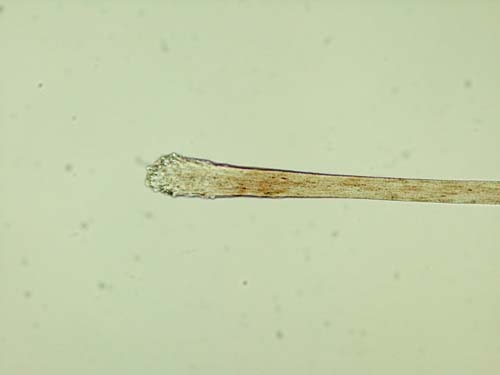There are four traditional methods of hair examination. The methods should be performed from general to particular, and from non-destructive to destructive. Therefore, the methods must begin with macroscopical examination, then microscopical examination, and end with nDNA or mtDNA analyses.
Macroscopical Examinations
Macroscopical examination includes the determination of the color, shape, length and thickness of the hair. This type of examination is typically performed using the naked eye or a stereomicroscope. Root assessment can also be conducted using low power microscopy. Identification of the sample as a human hair, as opposed to an animal hair, should also be determined .
Microscopical Examinations
Microscopical examination includes bright field examination of the color, pigment density and distribution, medulla presence and shape, and treatments and anomalies. Thickness, state of root and tips are also inspected. Medullar index and crosssectional shape should also be observed .
Nuclear DNA Analysis
Nuclear DNA analysis is the most objective and individualizing method in forensic hair examination. However, DNA must be extracted from the nucleated cells of sheath material or actively growing root cells that are not typically present in the telogen phase hairs, the most commonly encountered hairs in forensic casework .
Mitochondrial DNA Analysis
The last traditional method is mitochondrial DNA analysis. Mitochondrial DNA can be more readily extracted from the shaft of the hair or degraded samples than nuclear DNA. Melton et al. demonstrated a high rate of success for obtaining mtDNA profiles from 691 hairs encountered in casework. According to Melton and Nelson , the goals of mtDNA analysis are a) to protect the integrity of evidence by preventing contamination at any stage of testing, and b) to collect the maximum available amount of mtDNA data inherent to any sample for the purpose of obtaining the fullest mitochondrial DNA profile. Mitochondrial DNA, however, is not as selective as nDNA, due to maternal inheritance. Furthermore, it is not a common practice in forensic laboratories due to the time and expense associated with the method .



